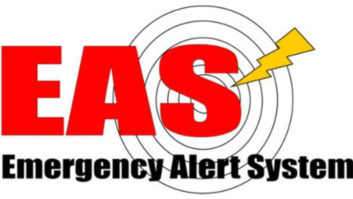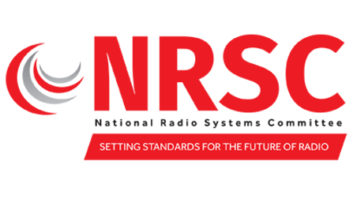Radio World has gathered tips and best practices for U.S. radio stations ahead of the upcoming national EAS test.
As you probably know by now, FEMA will conduct its test of the national Emergency Alert System on Wednesday Aug. 11, 2021. It will be fed at 2:20 p.m. EDT via the Primary Entry Point (PEP) Network. (FEMA will also be testing Wireless Emergency Alerts.)
This particular EAS test will not be available on the IPAWS network, because two years ago FEMA did one that bypassed internet connectivity and found some issues on the EAS side. Now it wants to document the effectiveness of the improvements since then.
Here’s what the experts have told us:
-Start by reviewing the FCC Emergency Test Reporting System website, the one it uses each time FEMA conducts national EAS tests. The page includes key information including guidelines for filling out the three required test reporting forms.
-By now you should have filled out Form One. Make yourself a note to file Form Two immediately after the Aug. 11 test (but no later than the next day, Aug. 12) and also to file Form Three by Sept. 27. (“I always recommend tackling these ETRS forms early in the allotted time windows,” says Aaron Read, IT/engineering director for The Public’s Radio in Rhode Island. Don’t wait until the last few hours or days, he said; in case of a problem on the FCC end, you’ll have time to call or email the help desk.)
-All of our sources agree that you should make sure that your EAS equipment has the most current software version. Check with your manufacturer if you aren’t confident.
-Larry Wilkins of the Alabama Broadcasters Association and chair of the Alabama SECC said engineers should check their equipment for the following items:
- Verify that you are monitoring the correct two sources, assigned by the State Emergency Communications Committee (SECC) or EAS committee. The alert will be received by the PEP station or stations in your state and relayed around the state via State Relay networks and the LP-1 and LP-2 stations in your area.
- Verify that the audio quality of both sources are broadcast quality (no crosstalk, hum, noise, etc.) and that the levels are correct to match your program audio.
- Verify that you are receiving the Required Weekly Test (RWT) from both monitor sources.
- Review the incoming filter list in your equipment to ensure there is a filter labeled National Periodic Test (NPT), with the originator set to primary entry point (PEP). The location should be left blank or have 6 zeros (000000).
- Verify that your EAS equipment has the correct date and time and is locked to a national time server.
- Assign someone to be on hand, monitoring the over-the-air (OTA) signal at the time of the test to verify proper reception and retransmission of the test.
(Larry’s ABA Engineering Academy also has posted a detailed video specifically to help stations prepare for this national test.)
-Manufacturer Digital Alert Systems released a preparation document to help users of its gear. It also noted, “The NPT is an occasion to perform essential checks on fundamental items, such as checking that the EAS equipment is operating, backup power is functional, the radio monitors are tuned and monitoring the appropriate sources from the state EAS plan, and the equipment’s software is updated.”
It too reminds stations to make sure their devices are synced to the correct time and time zone.
-Manufacturer Sage Alerting Systems reminded stations to check their logs to make sure they are receiving weekly tests from their monitor assignments, and that they have been originating weekly tests and relaying Monthly Tests as required by their license type.
“Make sure your ENDEC has a filter to receive and relay the NPT,” Sage wrote. “The easiest way to check this is to access your ENDEC with a web browser. From the main page, click the Tools button on the left column, then click the ‘Verify Req’ button. If you see ‘Your ENDEC will meet the FCC requirements for the National Periodic Test’ on the last line, your ENDEC is ready.”
-Another reader with experience in EAS recommends that you should monitor the Primary Entry Point even if none of your assignments are the PEP. “Obviously you still need to monitor your LP stations as assigned, but adding the PEP as an additional source is good practice. This does wonders to improve audio quality, which has been the most frequent complaint during previous tests.”
-Not specific to this test but about EAS in general, Aaron Read said, “EAS is a good place to not be cheap. Spend a little more and get the good encoder/decoders, like a Sage or DASDEC, that you can easily access and update remotely over the web. Get the good tuners like the Crown RFBA1 or the Inovonics InoMINI AM/FM/WX receivers,” he said.
“I know it’s an unfunded government mandate and that its usefulness in real terms is highly questionable for many stations across the country; so the instinct is to spend as little money on it as possible. But EAS is one of those things where the less you spend up front, the more you waste in time down the road, and the reverse is also true. And as we all know, time equals money.”
-And R. V. Zeigler, director of engineering for the Nebraska Rural Radio Association and chairman of the Nebraska SECC, offered us this series of tips:
- If you have noise issues picking up a terrestrial PEP, Zeigler said, there are also three satellite PEPs: NPR (its Squawk channel), Premiere Networks (its FEMA channel) and Sirius/XM (its non-subscription “Barker” channel). “Communicate with your SECC regarding these options,” he said. “The FCC has approved the use of these sources in state plans.”
- Also, Zeigler said, make sure everyone in your stations is aware of the upcoming test. “Reception may get calls. Programming as well as traffic need to be aware of the disruption in normal programming. Everyone else should know as well, in case they get questions from clients or the public at large.” Running a PSA in the days before the test can help.
- In fact he suggests you make sure your local Public Safety Answering Point or 911 answering center is aware as well. “Sending the dispatch and emergency management supervisors a copy of the FCC announcement would be a great goodwill gesture. SECCs generally take care of this; but as JFK said, ‘There is always some poor bastard who doesn’t get the word.’”
- When you submit Forms 2 and 3, save copies of all of forms for reference when the next NPT comes around.
- And last, Zeigler said, relax. “If you have checked everything on your end and followed all of the ideas in this article, you have done your job. This is a test, and only a test.”
If you need more information, contact your State Emergency Communication Committee (SECC), EAS Committee or State Broadcasters Association. You can also send an email to the Federal Communications Commission EAS Test Reporting System desk to [email protected].
FEMA also has a public-facing FAQ page about the test.












